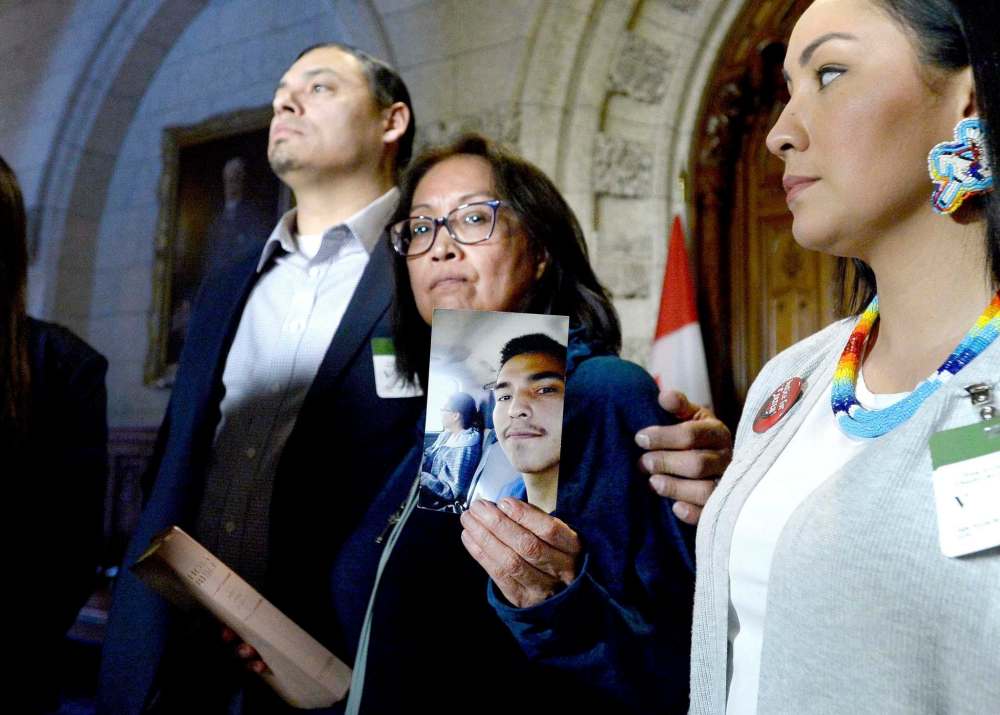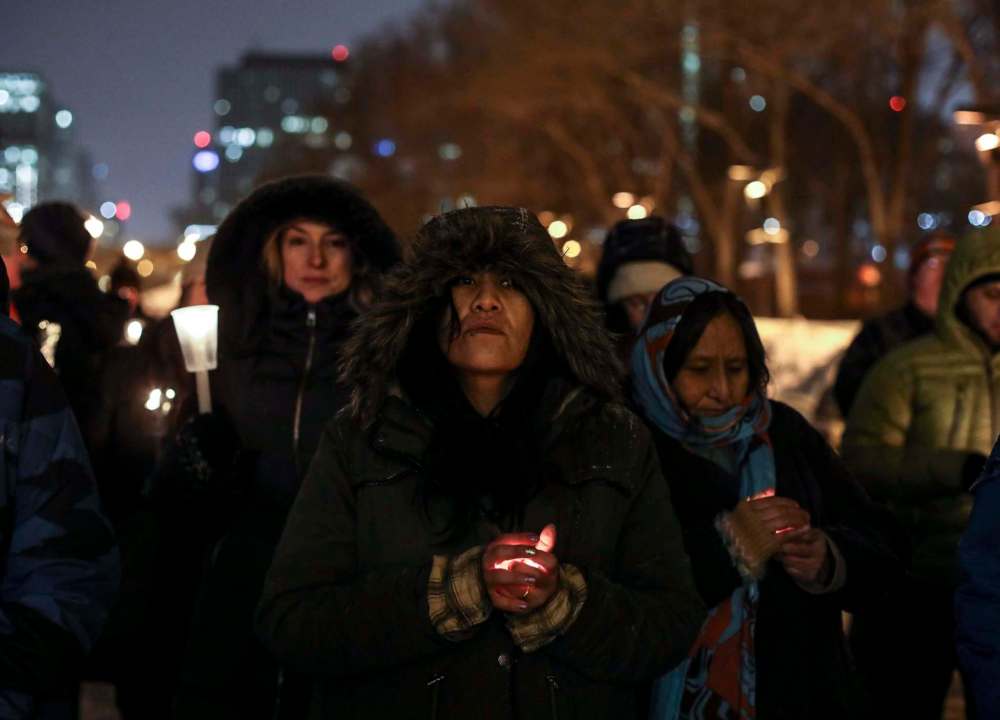Where’s the will to change?
What happened on that Saskatchewan farm in 2016 has split Canada at its seams
Advertisement
Read this article for free:
or
Already have an account? Log in here »
To continue reading, please subscribe:
Monthly Digital Subscription
$0 for the first 4 weeks*
- Enjoy unlimited reading on winnipegfreepress.com
- Read the E-Edition, our digital replica newspaper
- Access News Break, our award-winning app
- Play interactive puzzles
*No charge for 4 weeks then price increases to the regular rate of $19.00 plus GST every four weeks. Offer available to new and qualified returning subscribers only. Cancel any time.
Monthly Digital Subscription
$4.75/week*
- Enjoy unlimited reading on winnipegfreepress.com
- Read the E-Edition, our digital replica newspaper
- Access News Break, our award-winning app
- Play interactive puzzles
*Billed as $19 plus GST every four weeks. Cancel any time.
To continue reading, please subscribe:
Add Free Press access to your Brandon Sun subscription for only an additional
$1 for the first 4 weeks*
*Your next subscription payment will increase by $1.00 and you will be charged $16.99 plus GST for four weeks. After four weeks, your payment will increase to $23.99 plus GST every four weeks.
Read unlimited articles for free today:
or
Already have an account? Log in here »
Hey there, time traveller!
This article was published 16/02/2018 (2858 days ago), so information in it may no longer be current.
It is about what’s underneath.
What is underneath, but also over, surging over the Prairies like the molten guts of some long-smoking volcano. Ash cloud. Scorched earth. It wasn’t the rumble that killed Pompeii, it was the belch of toxic gases and superheated dust.
After the acquittal of Gerald Stanley in the shooting death of Colten Boushie, that pyroclastic surge came for us.

It was hot and thick and full of rage. It blazed over Canadian social media for days, still going as of this writing, choking most attempts at clear-eyed discussion of equity, fear, bias, legal questions and the facts of the case.
Stanley’s lawyer said the trial should not be “a referendum on racism.” Yet, he also saw race at the heart of this case: it was Stanley’s defence that, observers reported, challenged away every potential juror who appeared Indigenous.
It started long before that, though. Just five days after Boushie was killed, then-Saskatchewan premier Brad Wall pleaded on Facebook that the “racist and hate-filled comments” that were exploding on social media “must stop.”
Days later, a rural Saskatchewan councillor wrote on Facebook: “(Stanley’s) only mistake was leaving witnesses.”
This was an atmosphere in which a politician felt bold enough to suggest that a then-open second-degree murder case should have had more victims. So there was never a chance the trial would not raise more painful questions.
Did it have to be like this?
In a different reality, one in which there was both justice and peace, perhaps what happened on that Saskatchewan farm in August 2016 would not have split all of Canada along its seams.
Maybe, in that world, the Boushie family would have been allowed to grieve without also having to expose themselves to a nation’s gnashing public teeth. Their community could have found a way forward together.
After all, people are killed in Canada every week, in circumstances tragic or malicious or accidental or cruel. Sometimes, when facts are given room to breathe, they push forward a slow, painful march towards healing.
Or, in a better world, maybe none of this ever would have ever happened.
But this is not that world. So when supporters of the verdict declared it’s “not about race,” in the same string of tweets as they called Indigenous people drunks and thugs, it betrayed their true beliefs, and their motivations.
Some tweeted photos of Stanley’s face, appended with a slogan: “Making Saskatchewan Great Again.”
One thing cannot square with the other.
If one believes the jury was right to accept Stanley’s defence that the shooting was an accident, it does not follow for it to be celebrated. This is about what’s underneath, and over.
And it is about how, in the minutes after the acquittal, I shared a tweet from CBC journalist Lenard Monkman. He is one of the most talented rising voices in this country, inquisitive and thoughtful in the ways a journalist should be.
He wrote beautiful things that day, and in the ones that followed, about his perspective on the verdict.
Then I watched as waves of hate surged toward him, some of them drawn by my action sharing the tweet. Unable to stop the comments, to do anything except block the worst and to wonder how we can ever hear each other speak.
So this is about how we create spaces where it is possible to acknowledge and observe.
And it is about how an online fundraiser for Gerald Stanley swelled to more than $180,000 by late Wednesday, a figure that, with each donation, looked less like support for legal fees and more like a reward, a bounty. Kudos for a job well done.
Five dollars from a donor listed only by the name of the gun that put a bullet through Boushie’s skull.
Donations falsely made in the names of Liberal ministers and Indigenous authors, a middle-finger about race and politics.

Donations attributed to a Proud Canadian, and a Canadian Patriot. And Anonymous, so many anonymous.
Or, it is about how, on a private Facebook group for RCMP officers, one person — who APTN believes to be an active-serving officer — posted that “crimes were committed and a jury found the man not guilty in protecting his home and family.”
That wasn’t actually the defence, contrary to what many now assert. Self-defence is a high bar to clear in Canada, and Stanley’s lawyer didn’t make the attempt. The defence was that the gun fired accidentally, just as it was pointed at Boushie’s head.
“Too bad the kid died but he got what he deserved,” the commenter continued. “How many of us work on or near reserves and are getting fed up with the race card being used every time someone gets caught breaking the law?”
To this, another commenter on the private RCMP group replied that “if this young man (Boushie) was breaking the law, what he ‘deserved’ was a fair investigation and a fair trial if there was sufficient evidence to lay charges.”
Canadian law does not allow for summary execution. Any police officer who believes that a bullet to the head is what someone “deserved” for unproven allegations cannot be trusted to conduct a fair investigation, and is not fit to serve.
So it’s no mystery why the Boushie family and so many Indigenous people place no faith in this trial, the verdict or the Canadian justice system. That is just one comment that floated up to public attention; what else is underneath?
And what will it take to see leadership on these issues and clear plans to name and address the problems?
The Boushie family has identified a series of issues that it believes marred the investigation and trial, issues involving RCMP and Crown treatment of the grieving family, how evidence was protected and how the jury was selected.
All of these issues are focused and solvable.
But history has shown they won’t be addressed without public will.
Twenty-seven years ago, the Aboriginal Justice Inquiry in Manitoba issued its final report. It included, among other things, recommendations on how jury recruitment and selection can be made more equitable and more balanced.
If those recommendations had been implemented, some of the frustration over this trial might have been obviated. But Canada likes to commission reports on injustice against Indigenous people far more than it likes to take action.
Why? Why have these issues swirled in the eddies of public policy for decades, even after they were so clearly named and described?
Why does a nation not put into practice the knowledge it invested much to commission?
It is about what’s underneath. It always was, and — unless there is change, real change — it always will be.
melissa.martin@freepress.mb.ca

Melissa Martin
Reporter-at-large
Melissa Martin reports and opines for the Winnipeg Free Press.
Every piece of reporting Melissa produces is reviewed by an editing team before it is posted online or published in print — part of the Free Press‘s tradition, since 1872, of producing reliable independent journalism. Read more about Free Press’s history and mandate, and learn how our newsroom operates.
Our newsroom depends on a growing audience of readers to power our journalism. If you are not a paid reader, please consider becoming a subscriber.
Our newsroom depends on its audience of readers to power our journalism. Thank you for your support.

